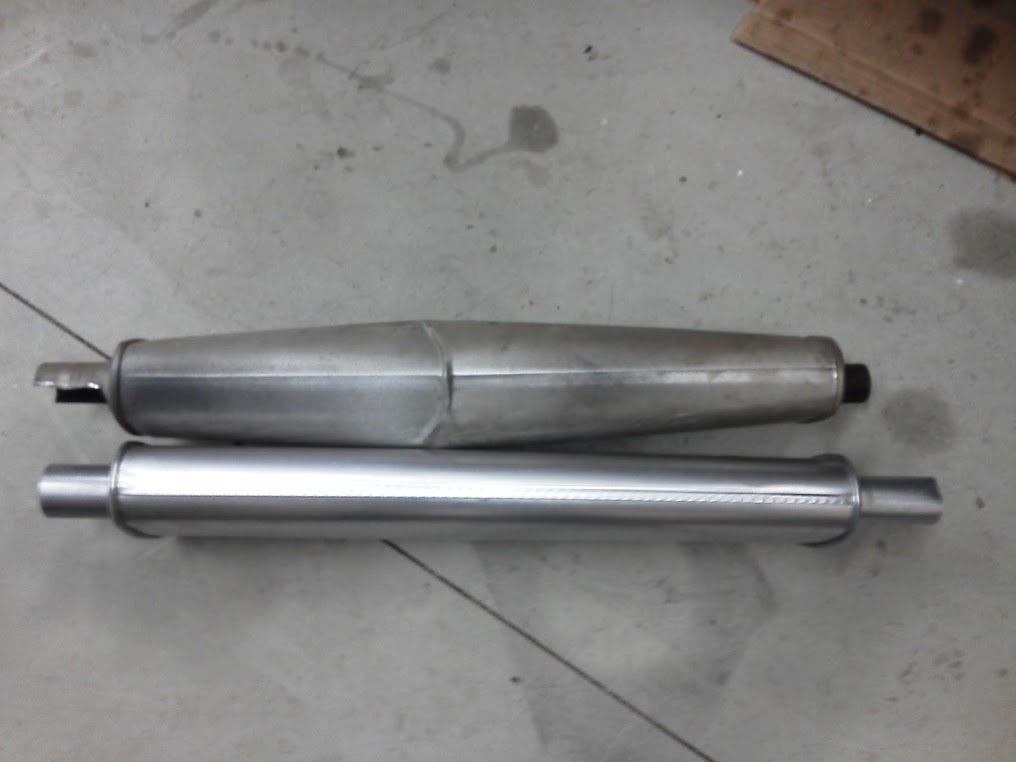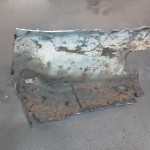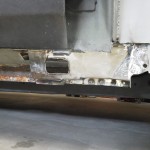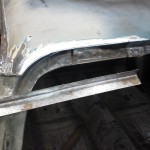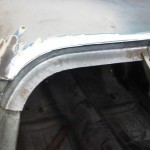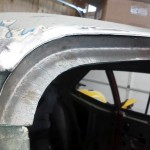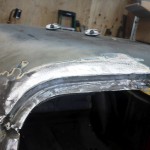
You may remember my 1964 Chevy Impala project from a while ago. Unfortunately, it hasn’t changed a whole lot in the past several months because of “life” combined with horrible New England winter. Luckily, now that it is above freezing outside sometimes, I’m starting to mess around with it again. Sweet right? Yea I think so too. Most recently, I decided to tackle a small project that has been bothering me for about 10 years. I call it “The stupid exploded muffler.”
This muffler story begins about 13-14 years ago when I reinstalled the straight 6 back into the rolling 64 Impala convertible chassis that I had just rebuilt. As you can imagine, I needed a new exhaust system to attach to my fancy painted engine (it was fancy at the time – now it looks terrible again). So, I went to my local auto part store and spent about $120 on a whole new exhaust system, including the muffler. Since then, the car has probably traveled … oh… maybe 3 total miles under its own power. Every inch of that was with a crappy carburetor, idling around my driveway. AKA – worst idea ever. Letting a car sit is the meanest thing that you can do to it, and this car really did some serious sit time. It’s just not good for the car, or any part attached to a car, especially the carburetor.
As you can tell from the pictures, at some point raw fuel built up in the muffler, and it ignited with the force of one thousand squirrels. The muffler ballooned enough to rattle on the floor pan with every rotation of the six’s crankshaft. That noise will drive a person crazy. The muffler explosion also tore the muffler open slightly in 1 area, but I welded it back up years ago just to keep it sealed. Now, many years later, I have rebuilt the carburetor, and it was finally time to replace the stupid exploded muffler.
Notice the wrinkles, the thickness difference, and awesomeness that is my stupid exploded muffler.
